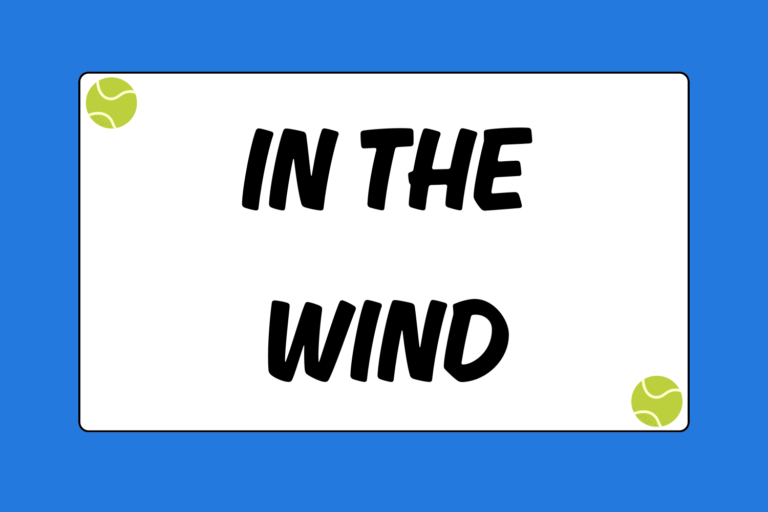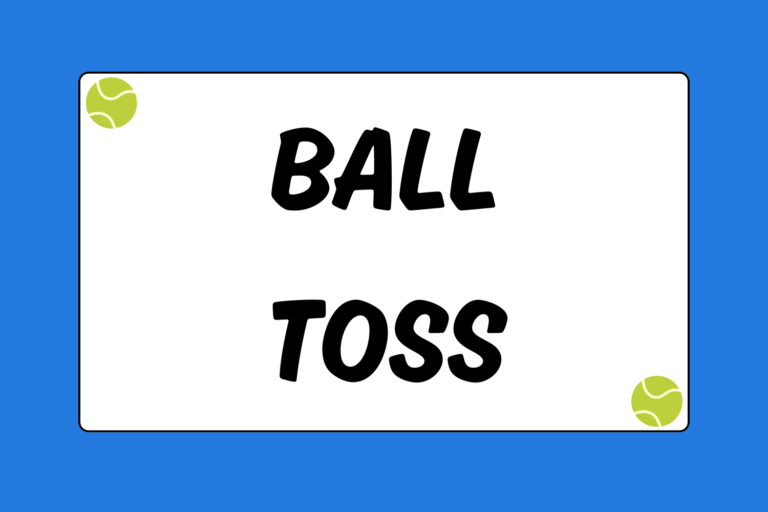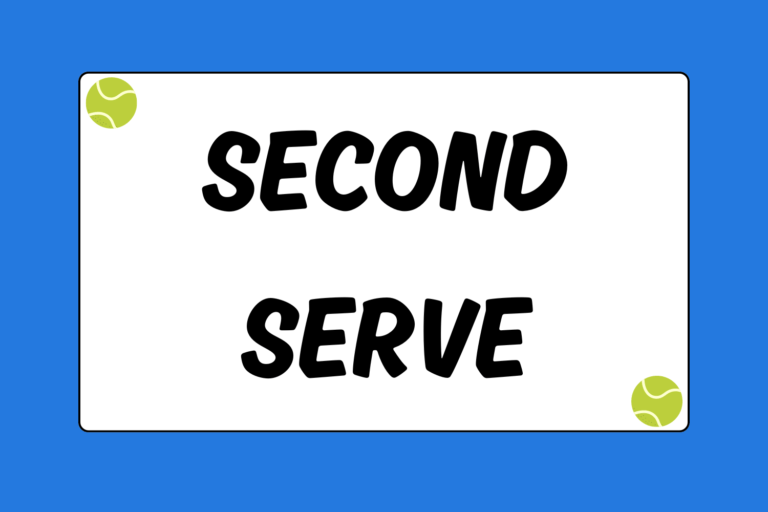Your tennis racquet is divided into two main sections: the head and the handle. The racquet head constantly makes contact with the ball, and is often adorned with flashy designs and shock absorbers. The handle, on the other hand, is among the most under-appreciated pieces of equipment in the game. It soaks in your hand sweat while never getting the glory of hitting a winner. The handle is the whimpering, homeless, unloved puppy of tennis.
But don’t be fooled. The most important aspect of tennis might be how you grip your racquet.
If you’re new to tennis, a key part of your success hinges on knowing how to properly hold a racquet. Your grip effects how you spin and control the ball, and will allow you to hit with more ferocity and pace.
This guide outlines the common ways to grip a racquet, and how each grip will affect your game. It’s ordinary for a player to switch grips throughout a match depending on the shot, situation, or strategy.
Feel the Octagon
Before you start swinging, take a moment to understand the handle of your racquet. The handle is an octagonal shape, meaning it contains eight sides (called bevels), which allows you to have a firm and comfortable grip. A square-shaped handle would hurt your hand and ruin your control.
If you hold your racquet out in front of your body, with the blade perpendicular to the ground, the side facing up is the first bevel. Rotating in a clockwise direction, the next face is the second bevel, and so on.
Forehand Grips
The most common forehand grips are the Continental, Eastern, Semi-western, and Western. Whether you are new to tennis or a professional player, you will need to learn about each of these grips.
The Continental Grip
Long ago, when tennis players wore long pants and dresses, the Continental grip was the predominant grip for most every type of shot. Now, most professionals only use the Continental for volleys, overheads, slices, serves, and defensive shots. The Continental grip does not allow for much topspin, thus the decline in popularity, but is great for beginners.
Find the Continental grip by holding your racquet straight out in front of your body and putting the base knuckle of your index finger on the second bevel (for lefties, the eighth bevel).
Pros
The Continental grip is a great way to control the ball while volleying, and allows you to transition from volleys to overhead strokes quickly and easily. Many players use the Continental grip while serving because it creates a powerful shot that doesn’t put too much stress on your arm.
Cons
Without much topspin, it’s hard to consistently keep the ball in play. Topspin allows you to hit the ball over the net with higher clearance because the ball dives downwards. With a Continental grip, however, you have to keep the ball close to net level, which increases the likelihood of unforced errors.
Eastern Forehand Grip
To find the Eastern grip, place the base knuckle of the index finger on the third bevel (for lefties, the seventh bevel). You can also obtain the grip by “shaking hands” with a perpendicularly held racquet. Lindsay Davenport, among other famous tennis players, used an Eastern forehand grip during her prolific tennis career.
Pros
The Eastern grip allows for topspin while not sacrificing control. It’s a versatile grip that lets you switch between a topspin and flattened shot. A flatter forehand will have more pace, but topspin increases consistency. Additionally, it’s easy to change grips from the Eastern, so you can quickly switch when playing at the net.
Cons
The Eastern grip can be inconsistent, and returning shots that bounce high is challenging. The stroke tends to be flatter, making it a difficult grip to rely on for long rallies. If your opponent is extremely consistent, or you want to mold your game around hitting with topspin, the Eastern grip may not be the best choice.
The Semi-Western Grip
The semi-Western grip is obtained by placing the base knuckle of the index finger on the fourth bevel (for lefties, the sixth bevel). This racquet grip is popular because it allows for pace and generates topspin. Powerful baseliners, like Marat Safin, rely on the semi-Western grip.
Pros
The semi-Western grip creates more topspin than the Eastern forehand grip, giving the player more control over the shot. Additionally, the grip allows for a powerful shot that can be used for hitting winners and driving the ball deep into the court. Players can take big swings with the semi-Western grip because of the topspin, and be aggressive with just about any shot.
Cons
Reaching low balls is very challenging with the semi-Western grip. The racquet face closes with this grip, which means you have to get underneath the ball. For this reason, and because changing to a Continental grip for volleys is difficult, many power players are hesitant to charge the net.
Western Grip
Place the hand so the base knuckle of the index finger is right on the fifth bevel. This grip forces the wrist into a strange and possibly uncomfortable twist, but the angle of the racquet face allows for the most topspin.
Pros
The Western grip generates the most topspin of any of the forehand grips. Although the grip is extreme, the ball will have a lot of movement and you’ll be able to hit well above the net while still keeping the ball in play. A well-struck ball will push your opponent to play at or behind the baseline, because of the tremendous kick the ball generates after bouncing. Many clay-court specialists, like Rafael Nadal, rely on the Western grip.
Cons
The grip is not extremely comfortable, and can cause wrist pain for any level of player. If you don’t have the strength or technique for the Western grip, the ball will often land short and be easy for your opponent to finish. Also, returning low balls is a nightmare. If you’re playing on a fast surface, like concrete or grass where the ball stays low, this grip can prove to be a major challenge.
Backhand Grips
The two most common backhand grips are the Eastern and two-handed backhand grips. Each style allows for an effective stroke, but both grips can be used depending on the situation or experience of the player.
Eastern Backhand Grip
Grip the racquet such that the base knuckle of the index finger and heel of the hand are right on the first bevel. Roger Federer is an example of a professional player that uses the Eastern backhand grip.
Pros
Like the Eastern forehand, this is a good all-around grip. You can generate topspin or flatten out your shot for more pace. The Eastern backhand grip provides stability for the wrist, while also proving to be an effective grip for striking the ball. Transitioning from the Eastern to the Continental grip is relatively simple, which helps your net game.
Cons
High balls are difficult to handle with the Eastern backhand grip, and generating topspin off a ball around shoulder-height is problematic. Since it’s difficult to control the ball without topspin, many players prefer to slice the ball back defensively.
Two-Handed Backhand Grip
While the two-handed backhand grip is the most popular backhand grip, there is some debate regarding hand-positioning. Most players hold the racquet in the dominant hand with a Continental grip, and then put the non-dominant hand on top with the base knuckle on the sixth bevel (for lefties, the fourth bevel).
Pros
If you are a young player or lack strength, the two-handed backhand grip is a great choice. The extra arm provides power when you swing through the shots, while also allowing you to reach high balls. An effective two-handed grip should improve control and allow the player to generate more power than a one-handed backhand.
Cons
A major downside to the two-handed backhand is that, with both hands on the racquet, it limits your reach. Additionally, many players become too dependent on having both hands on the racquet, and have trouble switching to a one-handed stroke when necessary. Slicing the ball requires a much different swing, and volleys are often hit with the dominant hand only, which can cause problems for players that rely on two-handed strokes.
Be Open to Change
As you may have already discovered, there is no one-grip-fix-all method to tennis. Different grips work better for certain shots, so you have to be flexible and willing to alter your game depending on the situation. Nevertheless, if you are a beginner and want to focus on simply being able to consistently keep the ball in play, pick the grip(s) that you are most comfortable with and practice. Over time you will learn how to include the various styles of play into your game.





